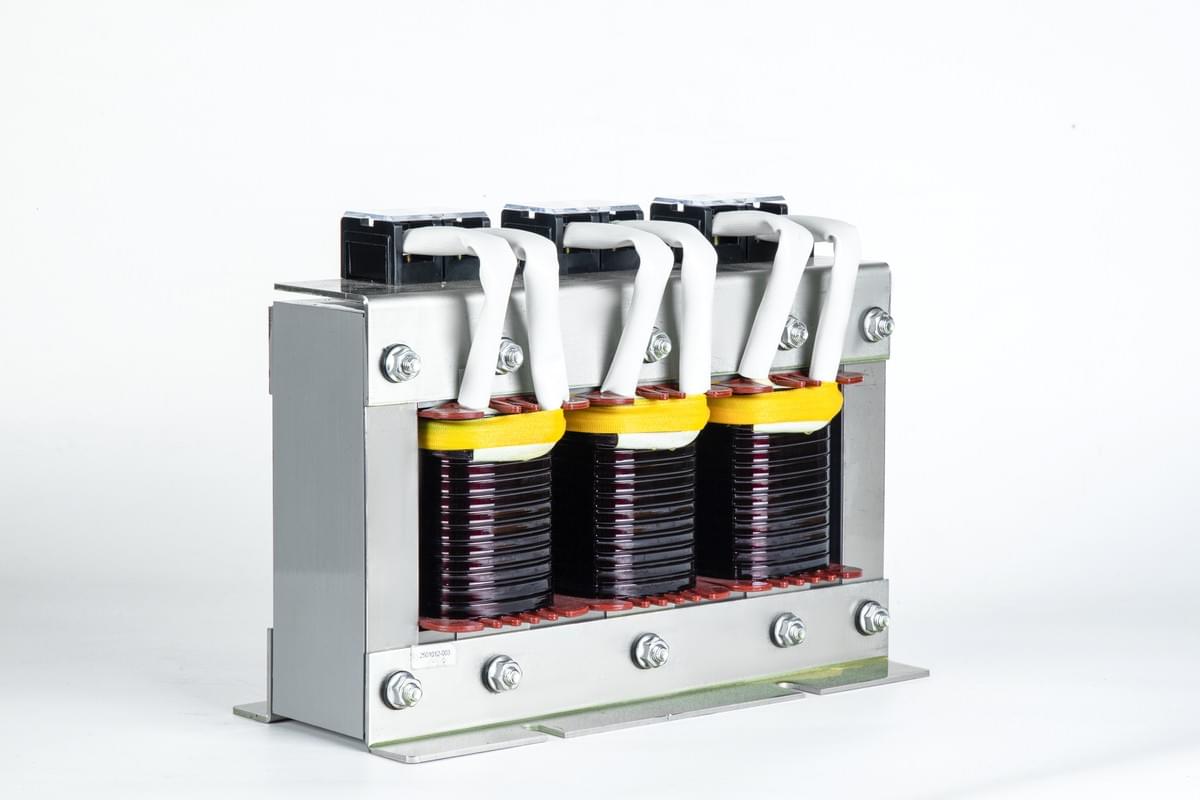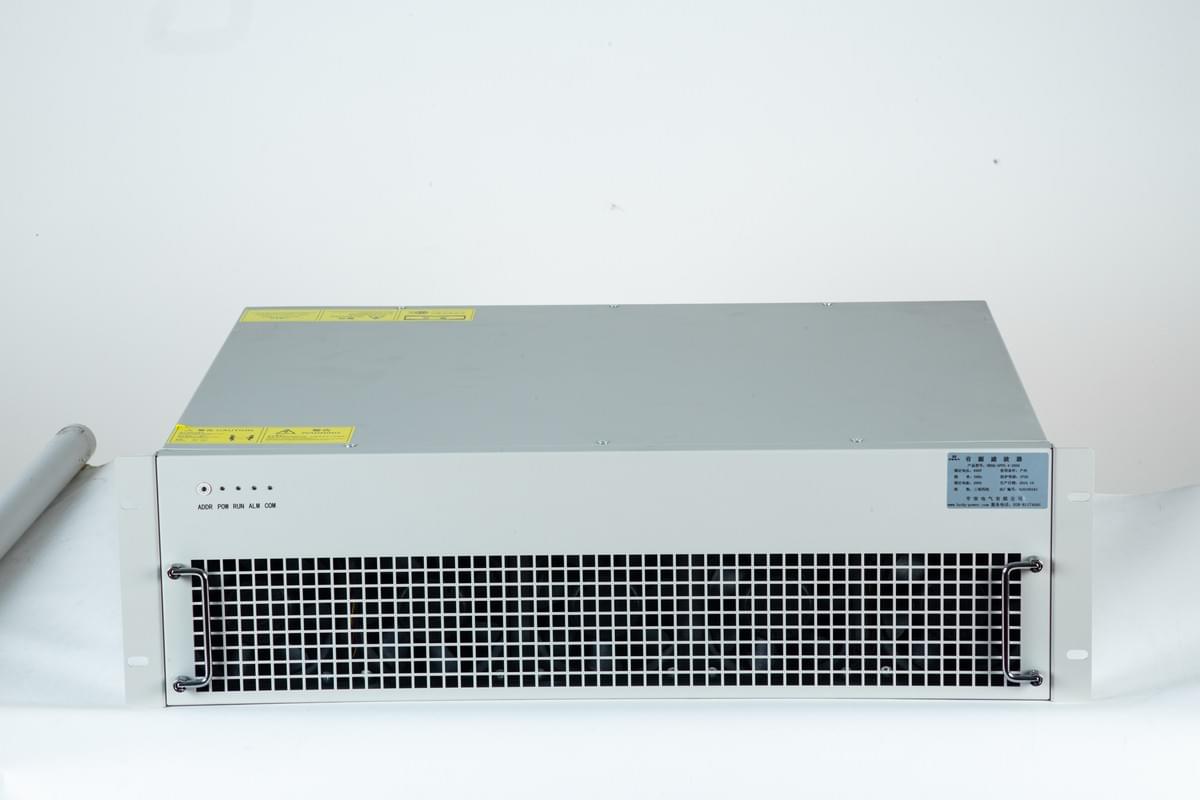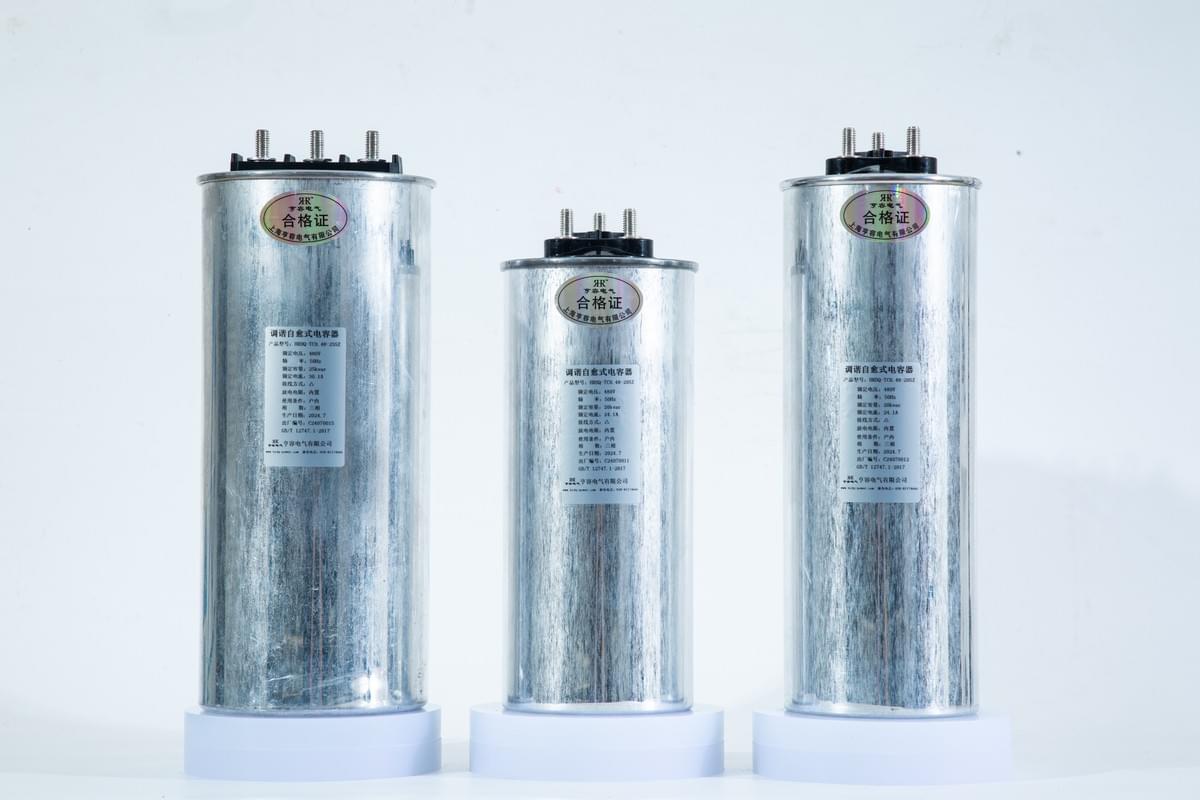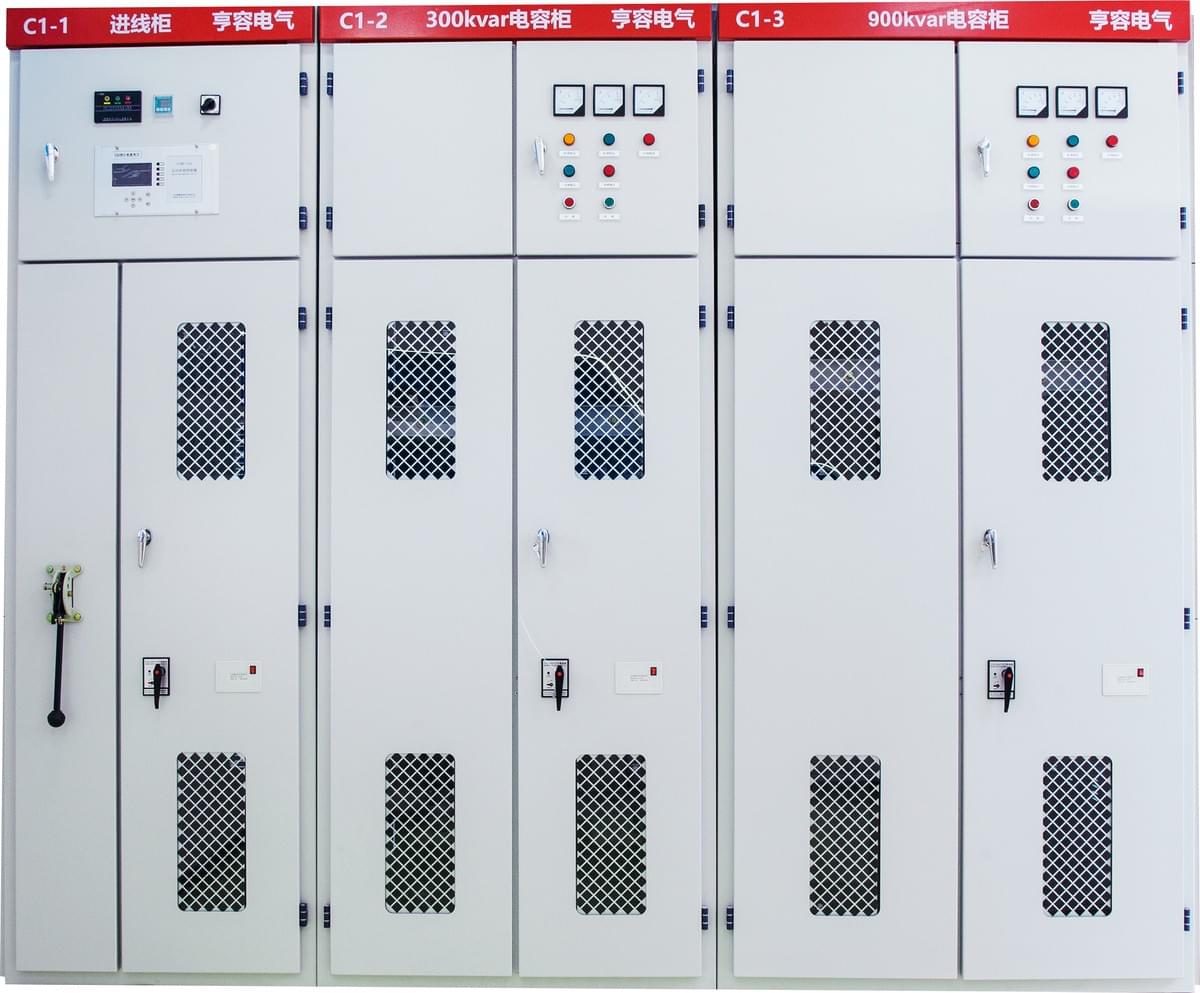Driven by the dual demands of power system upgrading and urban environmental governance, reactive power compensation devices—core equipment for improving power grid efficiency and stabilizing power supply quality—are being applied in an increasing range of scenarios. Particularly in substations located in densely populated areas, noise from reactive power compensation devices (represented by Static Var Generators, SVG) has gradually become a key factor affecting residents’ lives and environmental compliance. Taking a 220kV indoor substation in Wuxi, Jiangsu Province, as an example, this article combines Cadna/A noise prediction technology to conduct an in-depth analysis of the noise characteristics of different types of reactive power compensation devices, providing practical references for the selection and noise control of reactive power compensation systems in substations.

I. Reactive Power Compensation Devices (SVG): Core of Efficient Power Grid Operation, Why Focus on Their Noise?
Reactive power compensation technology is a critical means to reduce losses in power systems and enhance power supply stability. Among them, the Static Var Generator (SVG)—a mainstream type of dynamic reactive power compensation device—adjusts reactive current through a self-commutated bridge circuit, enabling rapid response to power grid load changes. In the field of new energy power generation, it can offset the volatility of wind and photovoltaic power; in urban power grids, it can address local power load gaps in winter and summer, ensuring a stable power supply for residents and industries.
However, with urban development, the distance between substations and residential areas has gradually shortened, making noise from reactive power compensation devices increasingly prominent. The noise source of SVG is directly related to its cooling method: air-cooled SVG relies on fans for heat dissipation, with noise mainly coming from fan operation and air duct vibration; water-cooled SVG achieves cooling through circulation pumps, with noise primarily generated by pump operation. Uncontrolled noise not only affects the quality of life of nearby residents but may also cause substations to fail to meet environmental standards, triggering compliance risks. Therefore, in the application of reactive power compensation devices, "efficient compensation" and "low-noise operation" must be considered simultaneously.
II. Cadna/A Support: Noise Prediction and Analysis of Reactive Power Compensation Devices (SVG)
To accurately assess the impact of reactive power compensation devices on the surrounding environment of substations, this study adopted the Cadna/A noise simulation software developed by DataKustik (Germany). This software is based on the international standard ISO 9613-2:1996, which is consistent with China’s GB/T 17247.2-1998 standard for sound propagation attenuation calculation. Moreover, it has obtained certification from China’s Ministry of Ecology and Environment, making it a reliable tool for noise prediction of reactive power compensation devices in substations.
1. Research Object and Basic Conditions of Reactive Power Compensation Devices
A 220kV indoor substation in Wuxi, Jiangsu Province, served as the carrier for this analysis. The substation originally had 3 main transformers and 8 capacitors, and it was planned to install 2 SVG reactive power compensation devices to improve the power transmission capacity of the main grid. The surrounding environment of the substation is complex: there is a 34-story residential building 27 meters south of the substation, and 34-story residential buildings and 4-meter-high houses are also distributed 17 meters west of it. This is a typical scenario of "substation in close proximity to residential areas," imposing extremely high requirements on noise control of reactive power compensation devices.
2. Noise Prediction Result Comparison of Two Types of Reactive Power Compensation Devices (SVG)
The study simulated the noise distribution after the installation of air-cooled and water-cooled reactive power compensation devices, with key data as follows:
- Air-cooled SVG Reactive Power Compensation Device: The sound pressure level at 1 meter reaches 75 dB(A). After superimposing the noise from existing capacitors and main transformers, the nighttime noise in some areas outside the northern boundary of the substation exceeds 50 dB(A) (the Class 2 standard limit specified in GB 12348-2008 Environmental Noise Emission Standard for Industrial Enterprises). The maximum noise level above the 9th floor of the 34-story residential building to the west reaches 41 dB(A), which meets GB 3096-2008 Environmental Quality Standard for Sound, but is close to the residents’ perceived threshold.
- Water-cooled SVG Reactive Power Compensation Device: The sound pressure level at 1 meter is 65 dB(A). After noise propagation is blocked by the 2.3-meter-high wall and buildings, the day and night noise around the substation boundary meets the Class 2 standard. The maximum noise level in the western residential building is only 40 dB(A), and the noise impact on high-rise areas is significantly lower than that of the air-cooled SVG reactive power compensation device.
In addition, on-site monitoring verification at a 110kV wind farm step-up substation in Yangzhou (noise outside the boundary of the air-cooled SVG reactive power compensation device ranges from 43 to 63 dB(A)) showed that the Cadna/A prediction results are highly consistent with the actual situation, further confirming the scientificity of noise prediction for reactive power compensation devices.

III. Noise Control of Reactive Power Compensation Devices (SVG): From Selection to Engineering Measures
Based on the prediction results and the three-dimensional control concept of "noise source - propagation path - receiver," the following solutions can be implemented for noise control of reactive power compensation devices:
1. Prioritize the Selection of Low-Noise Reactive Power Compensation Devices (SVG)
In noise-sensitive areas such as residential areas, medical and health institutions, and cultural and educational facilities, substations should prioritize the use of water-cooled SVG reactive power compensation devices. Their heat dissipation method, driven by circulation pumps, reduces noise by more than 10 dB(A) compared to air-cooled fans, minimizing noise emission from reactive power compensation devices at the source. The prediction data of the Wuxi substation shows that water-cooled SVG reactive power compensation devices can control the noise in surrounding residential areas within a better range, making them an ideal choice that balances "reactive power compensation efficiency" and "environmental friendliness."
2. Optimize Propagation Paths: Targeted Blocking of Noise Diffusion from Reactive Power Compensation Devices
If air-cooled SVG reactive power compensation devices must be used due to cost or site constraints, engineering measures can be taken to block noise propagation:
- Heightening Walls: In the Wuxi substation case, after heightening the northern wall from 2.3 meters to 2.8 meters, the noise from reactive power compensation devices outside the 1-meter boundary of the substation dropped to 45-49 dB(A), fully meeting the Class 2 standard.
- Adding Sound Barriers: Install sound barriers near reactive power compensation devices (SVG) and along the substation boundary. The closer to the noise source, the more significant the effect of blocking noise from reactive power compensation devices. The height and width of the barriers should be customized according to the substation’s layout and sound source location to ensure coverage of the main noise propagation directions.
- Adjusting Equipment Layout: Reposition the installation of SVG reactive power compensation devices to avoid direct exposure to residential areas. At the same time, use existing buildings such as the main control building and fire station as "natural sound insulation walls" to reduce the intensity of noise propagation from reactive power compensation devices.
3. Auxiliary Measures: Reducing Noise Exposure of Receivers from Reactive Power Compensation Devices
For residents near the substation, publicity guidance and protection suggestions can be provided to reduce the impact of noise from reactive power compensation devices—for example, reminding high-rise residents to close windows facing the substation at night or providing personal protective equipment such as earplugs and earmuffs. Additionally, the substation can regularly disclose the operating noise data of reactive power compensation devices to enhance residents’ trust in the environmental protection measures for noise from reactive power compensation devices.

IV. Conclusion: "High Efficiency + Low Noise" of Reactive Power Compensation Devices, Facilitating Sustainable Power Grid Development
As power grid construction transitions toward "intelligence and environmental protection," the application of reactive power compensation devices—core equipment—must not only meet the efficiency requirements of power systems but also adapt to the governance requirements of the urban environment. Through Cadna/A prediction and engineering practice verification, this study clarifies the advantages of water-cooled SVG reactive power compensation devices in low-noise scenarios and the noise control solutions for air-cooled SVG reactive power compensation devices, providing replicable experience for the planning of reactive power compensation systems in similar substations.
In the future, with the continuous upgrading of SVG technology, noise control of reactive power compensation devices will achieve further breakthroughs—for instance, the development of low-noise fans and silent circulation pumps, combined with AI real-time monitoring and dynamic noise reduction technology, is expected to achieve a win-win situation of "efficient compensation" and "zero noise impact." For power enterprises, proactively conducting pre-research and governance on noise from reactive power compensation devices not only demonstrates their fulfillment of environmental responsibilities but also serves as a key measure to avoid environmental disputes caused by noise from reactive power compensation devices in the later stage and ensure the smooth progress of projects.

Do you have procurement needs for reactive power compensation devices? Leave a message with your scenario, and Hengrong Electric CO., LTD. will respond quickly!
